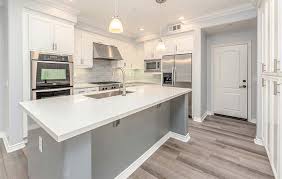When it comes to interior design, the finishing touches are what truly bring a space to life. While paint colours, furniture, and lighting often take center stage, skirting boards and door frames are the unsung heroes that complete your home’s look. They define edges, protect walls, and add a sense of balance and structure to any room. Choosing the right skirting and door frames can elevate your interiors from ordinary to exceptional, giving every space a polished and cohesive feel.
Understanding the Role of Skirting and Door Frames
Skirting boards are fitted at the base of your walls to cover the gap between the wall and the floor. They protect your walls from scuffs and add a clean transition between different surfaces. Door frames, on the other hand, surround and support the door, providing structure and style. Together, these two elements help define the architectural flow of your home. When coordinated well, they enhance your design aesthetic, making your interiors look thoughtfully finished and professionally designed.
Why the Right Choice Matters
The wrong skirting or door frame can disrupt the harmony of your space. For example, bulky traditional mouldings may overpower a sleek modern room, while ultra-thin trims might look out of place in a period-style home. By selecting skirtings and frames that suit your décor, you create a seamless look that feels natural and balanced. The right choice also improves functionality — high skirting boards can protect busy hallways, while durable materials like MDF ensure long-lasting beauty in high-traffic areas.
Popular Materials for Skirting and Door Frames
The material you choose greatly influences the appearance, durability, and cost of your trims. Here are the most common options:
-
MDF (Medium-Density Fibreboard): A top choice for modern interiors, MDF is smooth, affordable, and easy to paint. It’s resistant to warping and cracking, making it ideal for most homes.
-
Solid Wood: Adds natural warmth and texture but requires more maintenance. Best suited for traditional or rustic interiors.
-
PVC: Durable and moisture-resistant, perfect for bathrooms, kitchens, or basements.
-
Hardwood Veneers: Combine the look of solid wood with the affordability of MDF. Great for premium finishes without the heavy cost.
Among these, MDF stands out for its versatility, low cost, and professional appearance — a favorite among designers and homeowners alike.
Matching Skirting and Door Frames for a Unified Look
Consistency is key when it comes to creating a seamless design. Matching your skirting and door frames in material, style, and colour ensures harmony throughout your home. Choose similar profiles — for instance, if your skirting has a square edge, your door frame should also feature clean, straight lines. If you’re going for a more traditional aesthetic, ogee or torus profiles will complement classic interiors beautifully. When both elements share the same design language, your space feels cohesive and intentional.
Selecting the Right Height and Thickness
The height and thickness of your skirting boards should complement the proportions of your room and door frames.
-
Tall skirtings (120mm–200mm): Ideal for rooms with high ceilings, adding grandeur and elegance.
-
Medium height (100mm–120mm): A versatile choice that suits most modern homes.
-
Low skirtings (70mm–90mm): Great for smaller rooms or minimalist designs.
Ensure the thickness of your skirting matches the depth of your door frame to avoid awkward transitions. Proportionate sizing keeps everything looking balanced and well-planned.
Choosing the Perfect Colour and Finish
Colour coordination is another important factor. The most popular option is to paint both the skirting and door frames white for a timeless, crisp look. White trims complement any wall colour and make spaces feel open and clean. However, modern interiors often experiment with:
-
Monochrome tones: Painting trims the same colour as walls for a sleek, seamless look.
-
Contrasting shades: Using darker trims against light walls to create visual depth and definition.
-
Natural wood finishes: Perfect for adding warmth and texture in rustic or Scandi-style homes.
Choose a finish — matte, satin, or gloss — that complements your décor and lighting.
Installation and Maintenance
Proper installation ensures your trims not only look great but also perform well over time. Skirtings can be attached using adhesive or nails, while door frames require precision fitting for alignment and stability. Once installed, filling small gaps with caulk and painting ensures a professional finish. Maintenance is minimal — regular dusting or wiping keeps trims looking fresh. MDF and PVC options are particularly easy to care for, needing only occasional cleaning.
Design Tips for Elevated Interiors
-
Extend the same skirting and door frame design throughout your home for a consistent look.
-
Pair modern flooring (like laminate or vinyl) with sleek, square-edged skirtings for a clean effect.
-
Use wider door frames in open-plan layouts to create a sense of flow and continuity.
-
For luxury homes, consider custom-moulded MDF profiles or integrated LED lighting along the skirting line for a contemporary touch.
Conclusion
Skirting boards and door frames are much more than practical necessities — they’re design elements that shape your home’s personality. The right choice in material, profile, and colour can completely transform the way your interiors look and feel. Whether you prefer modern minimalism or classic charm, coordinated skirtings and door frames provide the finishing touch that elevates your home’s aesthetic. By paying attention to these details, you’ll achieve a beautifully balanced, polished, and timeless interior design that stands out for all the right reasons.


